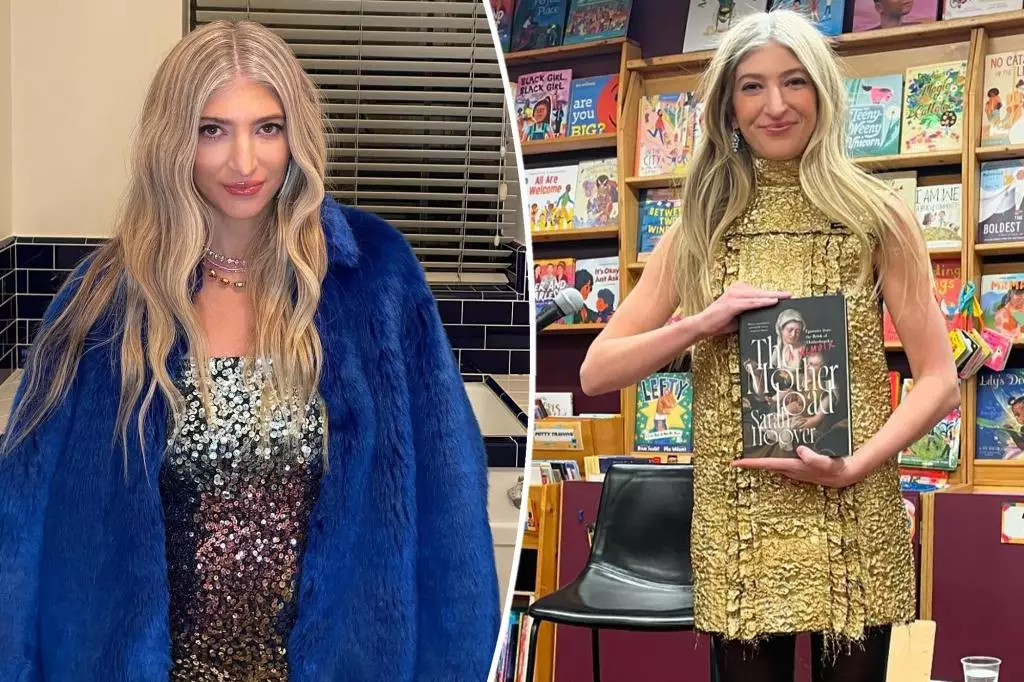In the world of socialite literary figures, few stories resonate as deeply as the rift between siblings, particularly when personal grief is exploited for public consumption. The tumultuous relationship between Sarah Hoover, an acclaimed author, and her estranged sister is emblematic of this tragic interplay. At the heart of their dispute lies a wrenching narrative: the delicate subject of a stillbirth, which the sister alleges was inappropriately utilized by Hoover in her recent memoir, “The Motherload.” This contention raises profound questions about ethics, accountability, and the moral compass guiding memoir writing.
The contentious issues reveal the layers of complexity often obscured in glittering social circles. Hoover’s sister claims to have been blindsided when her private experience—the sorrow of losing a child—was transformed into a public spectacle. Despite a prior promise from Hoover to seek permission before recounting shared traumas, the publication featured a controversial retelling that extended over multiple pages, shattering the sister’s trust and sparking emotional fallout.
The Pain of Exposure
Living in the shadow of public figures often entails the intrusion of the media into personal struggles, a phenomenon not new but still alarming. When Hoover’s sister expressed her distress over the exposure, describing her emotional breakdown upon learning of the memoir’s specific content, it underscored the human aspect often overlooked in narratives filled with celebrity glitz. “The idea that all these strangers were reading about my private life,” she lamented, is a sentiment echoed by many who live with the consequences of their loved ones’ choices.
Moreover, the sister’s assertion that Hoover fabricated elements of her experience—including a claim about having held the child—places the memoirist’s credibility at stake. This kind of embellishment poses grave implications: how can audiences trust writers who prioritize storytelling flair over factual integrity? As readers, should we accept that artistic expression permits the distortion of personal truths? Such dilemmas fuel discussions as to where the line lies between creative license and ethical obligation.
Public Reception and Its Consequences
Despite the turmoil behind closed doors, “The Motherload” has gained prestige and acclaim, featuring insights that resonate with many regarding postpartum depression. This public endorsement raises uncomfortable queries about our admiration and support for literary works derived from moral ambiguity. Can we, as avid consumers of memoirs, detach ourselves from the unsavory origins of the narrative, or does the allure of compelling storytelling blind us to the emotional realities faced by those involved?
The soaring praise for “The Motherload,” dominated by major platforms like Vogue and the New York Times, places Hoover in a privileged position within the literary landscape. Yet, such success offers no solace to her sister, who has ostensibly been painted as a minor character in a narrative she never agreed to share. This dissonance between public adoration and private anguish warrants reflection—how can we celebrate an author while simultaneously questioning the ethics behind her revelations?
Confronting the Past and Future Implications
While Hoover’s publicist defends her choice to share memories grounded in personal experience as the hallmark of memoir writing, this incident illustrates a darker side of literature. The call for accountability from Hoover’s sister is not merely a plea for acknowledgment but a demand for understanding in an age where personal stories are increasingly commodified. Should artists bear the duty of protecting familial relationships over the pursuit of narrative success?
Moreover, the repercussions of such familial betrayals extend beyond Hoover and her sister. They serve as stern warnings to other writers who tread the fine line between personal expression and ethical responsibility. Each memoir’s allure comes with a weighty consideration of the impact that revelations have not only on the writer but on all individuals woven into their narratives.
In this age of unprecedented personal exposure through social media and memoir literature, the preservation of trust within familial structures becomes paramount. For Sarah Hoover, the test lies ahead—not only in her artistic endeavors but in her ability to navigate the emotional complexities surrounding her personal relationships. Will she choose to rebuild that bridge of trust with her sister, or will the divide only deepen as she continues to chronicle her life for public consumption?

